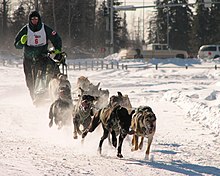Anthrozoology

Anthrozoology, also known as human–nonhuman-animal studies (HAS), is the subset of
Anthrozoology scholars, such as Pauleen Bennett, recognize the lack of scholarly attention given to non-human animals in the past, and to the relationships between human and non-human animals, especially in the light of the magnitude of animal representations, symbols, stories and their actual physical presence in human societies. Rather than a unified approach, the field currently consists of several methods adapted from the several participating disciplines to encompass human–nonhuman animal relationships and occasional efforts to develop sui generis methods.
Areas of study
- The interaction and enhancement within captive animalinteractions.
- bondsbetween humans and animals
- Human perceptions and beliefs in respect of other animals
- How some animals fit into human societies
- How these vary between cultures, and change over times
- The study of domestic animals evolved from wild species (paleoanthrozoology)[5]
- Captive zoo animal bonds with keepers
- The social construction of animals and what it means to be animal
- The human–animal bond
- Parallels between human–animal interactions and human–technology interactions
- The symbolism of animals in literature and art
- The history of animal domestication
- The intersections of speciesism, racism, and sexism
- The place of animals in human-occupied spaces
- The religious significance of animals throughout human history
- Exploring the cross-cultural ethical treatment of animals
- The critical evaluation of animal abuseand exploitation
- Mind, self, and personhood in nonhuman animals
- The potential human health benefits of companion animal ownership
- Human-animal hybrids(where each cell has partly human and partly animal genetic contents)
- Human-animal chimeras(where some cells are human and some cells are animal in origin)
Growth of the field
There are currently 23 college programs in HAS or a related field in the United States, Canada, Great Britain, Germany, Israel and the Netherlands, as well as an additional eight veterinary school programs in North America, and over thirty HAS organizations in the US, Canada, Great Britain, Australia, France, Germany, New Zealand, Israel, Sweden, and Switzerland.
In the UK, the
There are now three primary lists for HAS scholars and students—H-Animal, the Human-Animal Studies listserv, and NILAS, as well as the Critical Animal Studies list.[clarification needed]
There are now over a dozen journals covering HAS issues, many of them founded in the last decade, and hundreds of HAS books, most of them published in the last decade (see for example, Humanimalia). Brill, Berg, Johns Hopkins, Purdue, Columbia, Reaktion, Palgrave-Macmillan, University of Minnesota, University of Illinois, and Oxford all offer either a HAS series or a large number of HAS books.
In addition, in 2006, Animals and Society Institute (ASI) began hosting the Human-Animal Studies Fellowship, a six-week program in which pre- and post-doctoral scholars work on a HAS research project at a university under the guidance of host scholars and distance peer scholars. Beginning in 2011, ASI has partnered with Wesleyan Animal Studies, who will be hosting the fellowship in conjunction with ASI. There are also a handful of HAS conferences per year, including those organized by ISAZ and NILAS, and the Minding Animals conference, held in 2009 in Australia. Finally, there are more HAS courses being taught now than ever before. The ASI website lists over 300 courses (primarily in North America, but also including Great Britain, New Zealand, Australia, Germany, and Poland) in 29 disciplines at over 200 colleges and universities, not including over 100 law school courses.
See also
- Animal behavior
- ABMAP
- Animal rights
- Animal studies
- Anthropomorphism
- Birds in culture
- Cognitive ethology
- Companion animal
- Critical animal studies
- Domestication of the horse
- Ethnozoology
- Human–animal bonding
- Human–canine bond
- Intersectionality
- Insects in culture
- Origin of the domestic dog
- Pauleen Bennett
- Pet humanization
- Service animal
- Social grooming
- Trans-species psychology
- Zooarchaeology
References
- ^ Mills, Daniel S. "Anthrozoology" Archived 2016-06-03 at the Wayback Machine, The Encyclopedia of Applied Animal Behaviour and Welfare. CABI 2010, pp. 28–30.
- ^ DeMello, Margo. Teaching the Animal: Human–Animal Studies Across the Disciplines. Lantern Books, 2010, p. xi. and Hurn, Samantha. Humans and Other Animals. Pluto Press, 2012.
- ^ Animals & Society Institute. Archived June 25, 2013, at the Wayback Machine Retrieved February 23, 2011.
- ^ The term should not be confused with "animal studies", which often refers to animal testing.
- ^ College of Zoological Studies at London Hanover University - Paleoanthrozoology: Domestication of Species [1] Archived 2016-03-04 at the Wayback Machine
- ^ "Processes in Social & Affective Development: Human–Animal Interaction (HAI) Research". Eunice Kennedy Shriver National Institute of Child Health and Human Development (NICHD). December 30, 2017. Archived from the original on April 23, 2018. Retrieved April 7, 2018.
